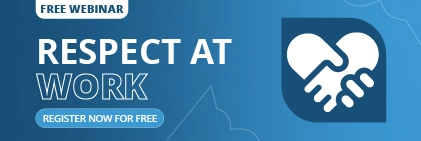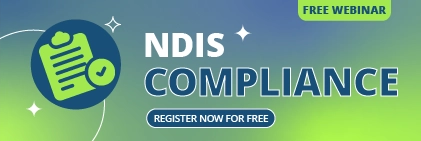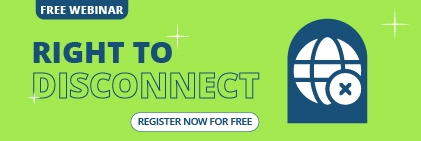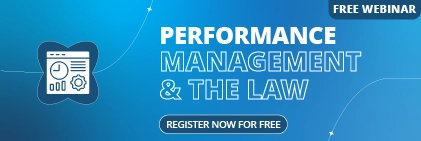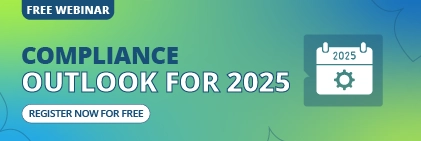Choosing the right human resources software can transform how Australian businesses manage their workforce, but it’s a decision that requires careful thought. With so many options on the market, from cloud-based tools to enterprise-grade systems, the process can feel overwhelming. We’re here to simplify your journey by highlighting a few key factors HR managers and business owners need to consider before making a purchase. You’ll learn how to assess your business needs, ensure compliance with Australian laws, and choose software that grows with your company.
Start by understanding your priorities. Are you looking to automate payroll, streamline recruitment, or improve employee engagement? Each goal demands specific features, and not every tool will suit your unique situation. For instance, HR software for small businesses in Australia often focuses on simplicity and affordability, while larger firms might need advanced analytics or compliance tracking. Local regulations, like the Fair Work Act, also play a big role. Your software must handle tax rules, superannuation, and leave entitlements accurately.
Cost is another critical piece. Prices vary widely, from per-employee-per-month models to flat fees. Hidden charges can even sneak up if you’re not careful. Beyond your budget, consider how usable the software is. Software that’s hard to navigate will frustrate your team and waste time. Look for intuitive designs and strong vendor support, especially from Australian-based teams who understand local needs. Also, keep in mind scalability. A solution that works today should adapt as your business expands.
By exploring these essentials, including needs, features, compliance, integration, and support, you’ll be equipped to choose wisely. Whether you’re a startup or an established organisation, this guide offers practical insights to ensure your investment in HR software in Australia pays off. Let’s break it down further.
Understanding Your Business Needs
Before diving into the world of human resources software, take a step back to figure out what your Australian business actually needs. This isn’t about choosing the flashiest tool. It’s about solving real problems. Whether you’re a small team or a sprawling enterprise, pinpointing your priorities sets the foundation for a smart purchase. Keep your business needs at the forefront of your mind, as it’ll decide the outcome of your choice.
Identifying Key HR Functions to Automate
Automation can save hours, but not every task needs it. Start with an audit: What’s taking up the majority of your HR team’s time? Payroll headaches might call for software with strong tax and superannuation features tailored to Australia. If hiring’s a consistent hassle, look for HR software with recruitment and onboarding features like applicant tracking or automated onboarding workflows. For some, managing leave requests or tracking performance might top the list.
Consider a small business being bogged down by manual employee data entry. A simple tool that organises records and tracks leave could be enough. Larger organisations, though, might need talent management or compliance reporting to stay on top of regulations. Focus on pain points that slow you down. Don’t get pushed one way or another by fancy features you know you won’t use. This keeps costs down and ensures the software fits your specific needs like a glove.
Considering Company Size and Growth Plans
Your business size shapes your software choice. HR software for small businesses in Australia often leans toward lightweight, cloud-based options. Think of quick setup and low costs for teams under 20. Bigger companies might need robust systems with customisation to handle complex workflows across departments. Either way, the fundamentals are the same.
But here’s the kicker: plan ahead. If your small startup aims to triple its staff in three years, pick software that’s capable of scaling. Modular tools let you add features, like analytics or recruitment, without starting over. Sentrient, for example, offers a range of options as you grow, sparing you the hassle of switching later. A unique tip? Map out your five-year growth. It’s a step many skip, but it prevents you from outgrowing your system too soon, saving time and money down the track. In the long run, five years isn’t much, but it’s still a significant milestone.
Evaluating Software Features
Once your needs are clear, it’s time to dig into what human resources software offers. Features can make or break your experience, so knowing what’s essential versus optional is key for Australian businesses.
1. Must-Have Features for Australian Businesses
Australia’s unique regulations mean some features aren’t negotiable. Payroll is at the top of the list. Your software must nail tax calculations, superannuation, and pay conditions under the Fair Work Act. Compliance tracking is next, with automated reports and audit trails keeping you legal. Leave management, tied to local holidays and entitlements, is a must too. And don’t skip employee self-service. Letting staff handle payslips and leave requests saves everyone time.
These basics aren’t flashy, but they’re the backbone of HR software compliance with Australian laws. Without them, you risk penalties or inefficiencies that hurt your bottom line. Prioritise vendors who understand Australia’s quirks. These will mostly be Australian-based companies.
2. Extra Features for Enhanced Functionality
Beyond the essentials, extras can boost your HR game. Recruitment tools speed up hiring. These can include applicant tracking or interview scheduling. Performance management lets you set goals and run reviews smoothly. Analytics reveal trends in engagement or turnover, helping you plan smarter.
These aren’t must-haves for everyone. A retail chain might look to hiring tools, while a tech organisation might value analytics. Weigh them up against your budget and goals. A hidden gem? Workflow flexibility. This is software that lets you tweak approval chains or notifications, which can adapt to your setup perfectly. It’s a game-changer for businesses with unique processes, making your HR software in Australia truly yours. Once you consider what your specific business and industry needs are, you’ll know exactly where to go.
3. Compliance and Legal Considerations
In Australia, compliance isn’t optional; it’s the law. Every business is required to follow all industry awards and regulations. Your human resources software must operate within the bounds of the law, or you’re in for trouble.
4. Australian Employment Laws and Regulations
The Fair Work Act covers wages, conditions, and rights. Your software should automate minimum pay rates, overtime, and leave balances. This is most commonly annual leave or sick days. It needs to churn out compliance reports too, ready for audits and inspections. Vendors like Sentrient stay current with legal shifts, so you’re not caught out by updates. This isn’t just nice, it’s critical to avoid fines and keep operations running smoothly.
5. Data Privacy and Security Requirements
Data privacy under the Australian Privacy Principles (APPs) is non-negotiable for all businesses that earn over $3 million in annual turnover. Look for encryption to protect employee info, plus role-based access so only the right people see sensitive stuff. Regular security updates guard against breaches. Dealing with European or other international clients? GDPR compliance might matter too. Check data residency with your clients. Software storing data in Australia cuts legal risks and keeps you compliant with local privacy laws. It’s a detail many miss, but it’s a big deal for HR software compliance with Australian laws and keeping up to date with all regulations.
6. Integration with Existing Systems
Your human resources software shouldn’t be isolated. It needs to play nice with your current tools. Good integration cuts errors and boosts efficiency.
7. Payroll and Accounting Software Compatibility
Payroll’s the big one. Linking with popular industry tools means seamless data flow. This leads to no more double-entry nightmares. Before you buy, test compatibility with your setup. A smooth sync here is non-negotiable for most businesses relying on HR software payroll integration in Australia.
8. Integration with Other Business Tools
Beyond payroll, think bigger. This can comprise time tracking, Customer Relationship Management (CRM), or Enterprise Resource Planning (ERP) systems. Strong connections reduce manual work and keep data consistent. It’s a lifesaver for flexibility, ensuring your HR software in Australia fits your whole ecosystem, not just one piece.
10. User Experience and Ease of Use
Great human resources software is useless if no one can use it. Usability drives adoption and saves frustration. If you want to get your team on board, you need to make sure it’s easy to use.
11. Intuitive Interface for HR Staff
Your HR team needs a tool that clicks. A clean layout, few clicks per task, and customisable dashboards make life easier. Providing effective training resources, such as videos or webinars, is essential. Inefficient software wastes time. Sentrient shines here with its straightforward design, proving HR software in Australia can be both powerful and simple. Sentrient also offers free webinars and support for its clients, helping bridge the gap and keeping your software solutions working.
12. Employee Self-Service Portals
Self-service portals are a win-win. Employees can view payslips, request leave, or update details themselves. No matter what, it’s less work for HR. For remote teams, mobile access is a must-have. A responsive app keeps everyone connected. It boosts satisfaction, too, and staff feel more in control. Pick software with this, and your HR software for remote workforce management will shine. The less time your HR team needs to spend on menial tasks, the more time they can spend working on broader strategy and performance improvements that can benefit your whole company.
Common Mistakes to Avoid
Sidestepping pitfalls saves headaches when choosing human resources software. Learn from others’ mistakes.
Overlooking User Feedback and Reviews
Don’t trust demos alone. Australian reviews and case studies reveal the real message, both good and bad. It’s a reality check for HR software performance. Remember that a demo is nothing more than an advertisement, showcasing the best parts of the product to lure you in and secure one more client.
Failing to Plan for Implementation and Training
Insufficient data migration time or testing can lead to errors. Skipping employee training may decrease motivation within your business. It is advisable to involve HR, IT, and users early for a smooth rollout of your HR software implementation timeline. Having a plan provides a general framework for tracking progress at any given time.
FAQs
1. What’s the best HR software for small businesses in Australia?
Sentrient stands out for small businesses with its affordable, scalable plans and easy-to-use interface, ensuring compliance and growth support for Australian startups.
2. How does HR software ensure compliance with Australian laws?
It automates pay rates, leave tracking, and reporting to align with the Fair Work Act, reducing manual errors and keeping your business legally sound.
3. Can HR software sync with my payroll system?
Yes, top HR software integrates with the most common accounting and payroll software, syncing data in real-time for accurate tax, superannuation, and payroll management in Australia.
4. What’s key for HR software for remote workforce management?
Mobile-friendly apps and self-service portals are vital, letting remote employees access payslips, request leave, and update details from anywhere, anytime.
5. How much does HR software cost in Australia?
It varies considerably. Most vendors have different payment plans, with some operating on a flat-fee basis, and others on a variable rate, based on number of users. Talk to your vendor to work out what’s best for you and grab several competitive quotes to ensure you’re getting the best value for your money.
6. Why is local support vital for HR software in Australia?
Australian based support understands local laws and offers timely help during your business hours, ensuring quick fixes and compliance confidence. Not only that, you’re able to rest assured that your chosen vendor is trustworthy and reliable.
7. What risks come without HR software?
Manual processes increase errors, non-compliance risks, and inefficiencies, potentially leading to legal penalties and lost productivity for Australian businesses. In the modern business landscape, it’s a risk not many would dare to take.
8. How long does HR software implementation take?
It ranges from weeks to months, based on your business size and HR complexity. Proper planning cuts delays and ensures success, but hidden traps can slow you down.
9. Does HR software aid recruitment and onboarding?
Yes, it offers applicant tracking, interview scheduling, and onboarding workflows, making hiring and new employee integration faster and more efficient.
10. What if my business outgrows its HR software?
Choose scalable HR software like Sentrient for growing businesses, which upgrades features and user limits to match your expansion seamlessly.
Read More About HR Management:
- The Ultimate Selection Checklist for Purchasing HR Software for Australian Companies
- 5 Must-Have HR Software Features For Australian Small Businesses
- How To Choose The Best HR Software In Australia For Award Interpretation And Super Compliance
- The Fundamentals of Human Capital Management Explained
- Understanding Employee Offboarding: What It Is and Why It Matters
